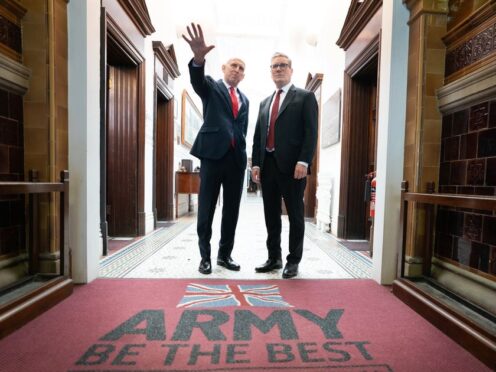Labour can be trusted to “stick to serious defence policy”, the former head of GCHQ has said as he criticised the Conservatives for delaying new nuclear submarines.
Writing in The Daily Telegraph, Sir David Omand said he was “attracted” to Sir Keir Starmer’s offer of a “decade of national renewal” and Labour’s policies on defence and renewable energy.
He praised the manifesto commitments to spend 2.5% of GDP on defence as soon as possible and continue supporting Ukraine against Russia, adding: “Labour’s announcement of a ‘triple lock’ on our nuclear deterrent indicates that we can in future trust the party to stick to serious defence policy.”

Labour has pledged to maintain Britain’s continuous-at-sea nuclear deterrent, deliver the new ballistic submarines being built at Barrow-in-Furness, and provide all the upgrades needed to keep the deterrent going.
Sir David, who led GCHQ between 1996 and 1997 before becoming permanent secretary at the Home Office and then UK security and intelligence co-ordinator, contrasted the policy with earlier decisions to delay building new submarines.
He criticised David Cameron’s decision as prime minister to delay the order for new submarines, saying he had ignored “the increasingly intense warnings of his chief of defence and senior civil servants”.
In 2010, the government under Lord Cameron, now Foreign Secretary, decided to delay replacing the submarines by up to five years, prolonging the life of the Vanguard-class submarines first launched in 1992.
Sir David added: “The inevitable result was a long and very costly refit for the oldest of the current fleet, HMS Vanguard, which had to include an unplanned refuelling of her nuclear reactor.
“This has meant unnecessary expenditure of hundreds of millions of pounds, as well as great strain on our submariners and their families. This was completely avoidable.”
He also praised Labour’s plans to decarbonise the electricity grid by 2030, saying he did not want to see the UK “beholden to fossil fuel autocrats”.
Rishi Sunak has previously argued that Labour is a threat to national security, saying shortly before he called the election that Sir Keir’s actions demonstrated he would not be able to keep the country safe.
On Monday, he told reporters the Labour leader did not have “the courage of his convictions”, adding he was “not prioritising investment in our country’s security”.
The Conservatives have also pledged to raise defence spending to 2.5% of GDP, saying they will hit this target by 2030 while Labour has not put a timeframe on its promise.
